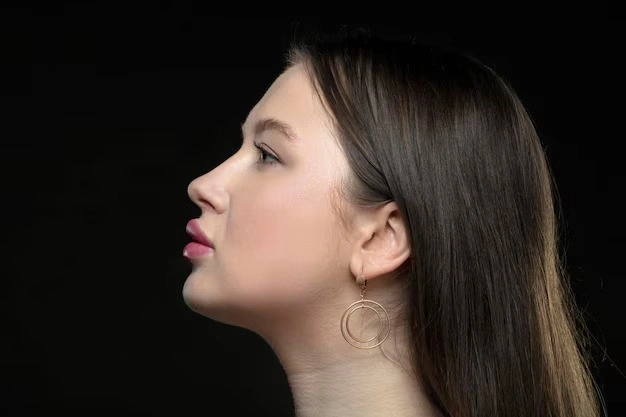Thinking about reshaping your nose but overwhelmed by the details? Whether you're planning cosmetic enhancement or correcting a functional issue, rhinoplasty can be a transformative experience. For those exploring rhinoplasty in Riyadh, (عملية تجميل الأنف في الرياض) understanding the procedure from every angle helps ensure a confident and informed decision. Below, expert surgeons answer the 10 most frequently asked questions about rhinoplasty—everything from pain levels to final results.
1. What Exactly Is Rhinoplasty?:
Rhinoplasty is a surgical procedure designed to reshape, resize, or reconstruct the nose. It can be performed for cosmetic reasons, to improve facial harmony, or for functional purposes like correcting a deviated septum.
What It Can Address:
- Nasal hump or bump
- Wide or narrow nasal bridge
- Drooping, bulbous, or upturned tip
- Crooked or asymmetrical nose
- Breathing difficulties caused by structural issues
2. Am I a Good Candidate for Rhinoplasty?:
Ideal candidates are individuals in good health who have completed facial growth (usually age 16+), and who have realistic expectations about what the surgery can achieve.
Factors That Make a Good Candidate:
- Stable mental and physical health
- Non-smoker or willing to quit during recovery
- Dissatisfaction with nasal appearance or function
- No chronic nasal infections or untreated conditions
3. How Do I Choose the Right Surgeon?:
The success of your rhinoplasty heavily depends on the surgeon’s expertise. For those seeking rhinoplasty in Riyadh, look for specialists with international training, board certification, and a strong portfolio.
What to Look For:
- Board-certified plastic or ENT surgeon
- Experience with both primary and revision rhinoplasty
- Before-and-after gallery of similar cases
- Positive patient reviews and clinic reputation
- Clear communication during consultations
4. What Happens During the Surgery?:
Rhinoplasty typically takes 1.5 to 3 hours and is performed under general anesthesia. The surgical approach will depend on your goals and anatomy.
Two Main Techniques:
- Open Rhinoplasty: External incision for full visibility; used for complex reshaping
- Closed Rhinoplasty: All incisions are internal; less invasive, quicker healing
The surgeon will modify bone, cartilage, or soft tissue to achieve the desired shape before closing the incisions and applying a nasal splint.
5. Is Rhinoplasty Painful?:
Most patients describe post-op discomfort as mild to moderate rather than painful. Pain is typically well-managed with medication and subsides within the first few days.
Common Sensations After Surgery:
- Pressure or tightness in the nose
- Mild bruising and swelling
- Temporary nasal stuffiness
- Slight headache or facial tension
6. How Long Does Recovery Take?:
Initial recovery takes 1 to 2 weeks, but full healing and final results can take up to a year.
Recovery Timeline:
- Week 1: Splint removed; bruising starts to fade
- Week 2–3: Return to light activities or work
- 1–3 Months: Swelling continues to subside
- 6–12 Months: Final nasal shape becomes fully visible
Following post-op care instructions ensures a smoother recovery and better outcomes.
7. Will There Be Visible Scarring?:
Scarring is minimal to none, especially with closed rhinoplasty. Even open rhinoplasty leaves a small incision under the columella, which typically heals very discreetly.
Tips to Minimize Scarring:
- Keep incision areas clean and moisturized
- Avoid sun exposure during early healing
- Follow your surgeon’s skincare and scar treatment recommendations
8. Can Rhinoplasty Improve Breathing?:
Yes, rhinoplasty isn’t just cosmetic. It can significantly enhance airflow and nasal function when paired with procedures like septoplasty or turbinate reduction.
Functional Benefits:
- Better sleep and reduced snoring
- Easier breathing during exercise
- Relief from chronic nasal congestion
In many cases, functional and cosmetic goals are combined in a single surgery for optimal results.
9. Are the Results Permanent?:
Yes, the changes made during rhinoplasty are permanent. However, the nose continues to age naturally, just like the rest of your face.
What to Expect Long-Term:
- Stable results after 12 months
- Minor changes may occur over decades
- Touch-ups are rarely needed if the surgery is performed well
Proper surgical planning and realistic goals reduce the likelihood of revision procedures.
Final Thoughts:
Choosing to undergo rhinoplasty is a deeply personal decision. Whether you're aiming to enhance your appearance or fix a functional concern, the key to a successful outcome lies in setting clear expectations, choosing an expert surgeon, and following post-operative care to the letter.
With advanced surgical techniques and highly trained specialists, rhinoplasty in Riyadh continues to attract patients seeking both aesthetic excellence and medical professionalism. Now that your top questions are answered, you're one step closer to making an informed choice.

